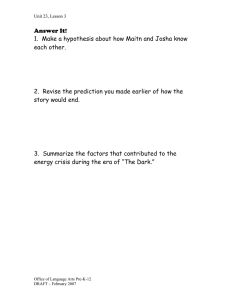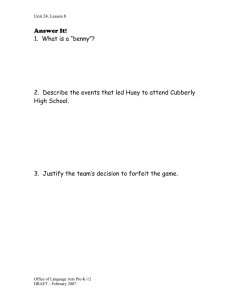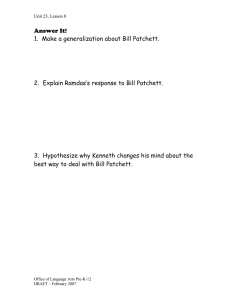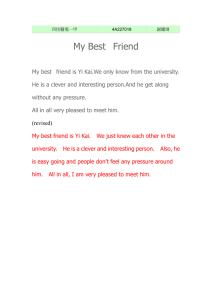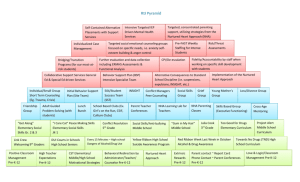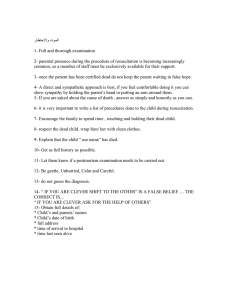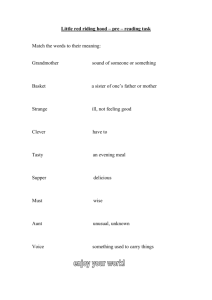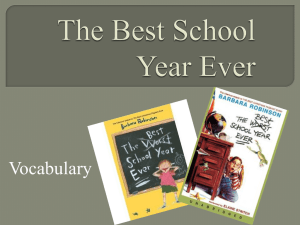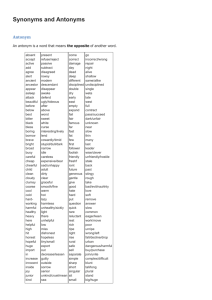Answer It! The Sticks
advertisement
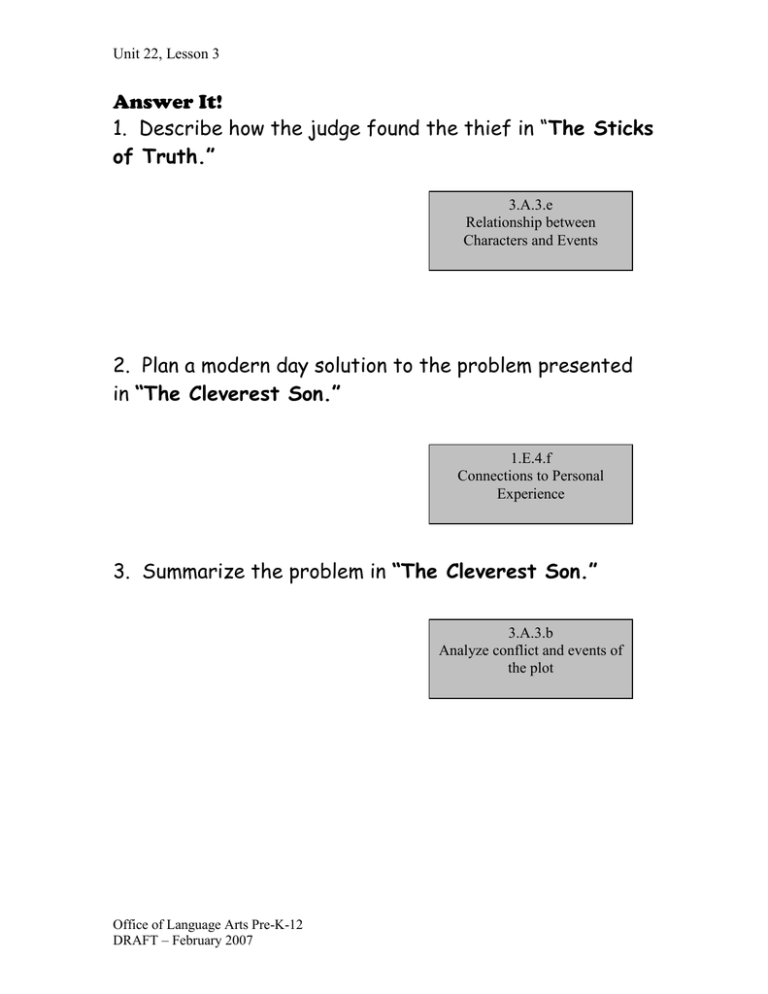
Unit 22, Lesson 3 Answer It! 1. Describe how the judge found the thief in “The Sticks of Truth.” 3.A.3.e Relationship between Characters and Events 2. Plan a modern day solution to the problem presented in “The Cleverest Son.” 1.E.4.f Connections to Personal Experience 3. Summarize the problem in “The Cleverest Son.” 3.A.3.b Analyze conflict and events of the plot Office of Language Arts Pre-K-12 DRAFT – February 2007 Unit 22, Lesson 3 4. Explain how a bee helped King Solomon pass the test in “Which Flower?” 3.A.3.b Analyze conflict and events of the plot 5. Compose a different title for the folktale “Love and Pumpkins.” 1.E.4.a Main Idea Office of Language Arts Pre-K-12 DRAFT – February 2007 Unit 22, Lesson 3 6. In the introduction, the author states that these puzzling stories are folktales that “usually have a message.” Explain the lesson someone could learn from reading these puzzling tales. Use details from the story in your explanation. What Do You Think? Why Do You Think That? 3.A.6.a Analyze main ideas and messages Answer Cues: Someone reading “The Sticks of Truth” could learn that trying to hide your crimes or mistakes will only end up getting you caught. If the woman had not been trying to hide her guilt by cutting off two inches from her stick, hers would have still been the same as the others in the morning. In both “The Cleverest Son” and “Which Flower?” the winner is determined because they were clever and used their brains to solve a problem rather than trying to buy their way out or giving up. Someone reading this could learn the value of being thoughtful and clever and thinking through a problem before trying to solve it. A reader could also learn the importance of taking one’s time to think carefully and approach a problem from a clever point of view – the youngest son, the judge and the king were all patient and careful in their approach to solving the problems they faced and proved that being “clever” can triumph over being strong. Office of Language Arts Pre-K-12 DRAFT – February 2007
